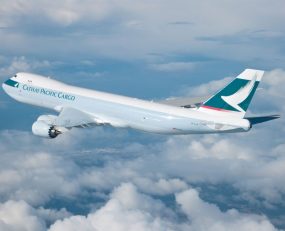
Cathay Pacific has announced a new ‘click and pay’ cargo booking system. Although by the standards of other parts of the global logistics economy it is not so exciting, the promise to deliver “booking transparency and speed, day and night” offering customers the ability to “view prices and capacity, and book cargo with instant confirmation in just three steps through the intuitive booking interface” is impressive for airfreight.
Cathay Pacific is an important player in the global conventional airfreight sector. Its position in both Hong Kong and South-East Asia, but also its more or less unique network in China, gives it a competitive edge in the airfreight market. However, the company is struggling at present. For all of the hype, China has not been able to rid itself of COVID-19 as it promised itself it would do and its extreme policies continue to be an obstacle to contact with the outside world. Hong Kong is being sucked into this response, making doing business in a place that aspires to be a global trade hub increasingly difficult.
Cathay Pacific has been particularly afflicted by such problems, with its flight crew under onerous restrictions due to Hong Kong’s approach to quarantine. Three pilots were fired for catching COVID-19 whilst laying-over in Germany, a reflection of the pressure that Cathay Pacific is under in Hong Kong over the perception that flight crew may bring in infections. The stress on staff even flying on cargo aircraft is such a that some operators, such as FedEx, have relocated their pilots away from Hong Kong, but this option is much more difficult for Cathay Pacific.
It is not that the air cargo market is so depressed, with the airline carrying 19.8% more freight than the same period in 2020 and its revenue per cargo-tonne kilometre up 21% year-on-year. However, these numbers still represent a fall of 25.2% and 14.9% respectively on the 2019 traffic. A core problem remains that passenger numbers remain very soft at 44% of pre-pandemic traffic, with long-haul flights being the worst hit. The consequence is that Cathay is being forced to rationalise its services, especially to destinations in Europe. Very few people are flying to Hong Kong from outside China.
Discussing the situation, Cathay Pacific’s Director of Cargo, Tom Owen commented that “global constraints in the supply chain are also impacting our operation to some degree, particularly on the transpacific routes”, noting that the mal-distribution of pallets and ULDs was a problem. However, these are short-term problems and ones shared by many other airline cargo operations. The longer-term challenge for Cathay Pacific is how to get past the questions that its home base increasingly implies.
Source: Transport Intelligence, 30th November 2021
Author: Thomas Cullen